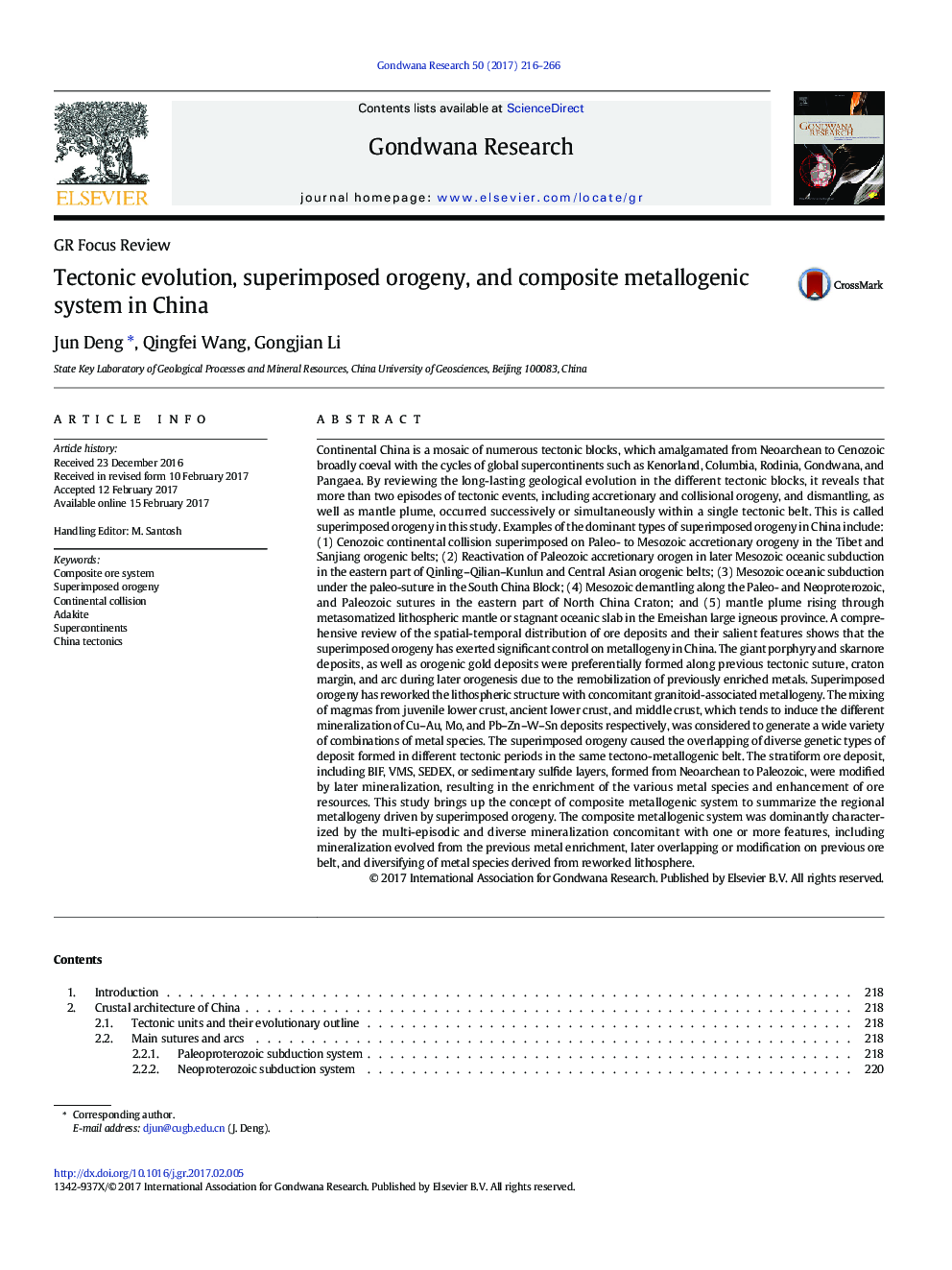| کد مقاله | کد نشریه | سال انتشار | مقاله انگلیسی | نسخه تمام متن |
|---|---|---|---|---|
| 5785244 | 1640121 | 2017 | 51 صفحه PDF | دانلود رایگان |
- China tectonism dominated by superimposed orogeny
- Superimposed orogeny controls the production of ore deposits.
- Magma from different parts of crust induced diverse metal mineralization.
Continental China is a mosaic of numerous tectonic blocks, which amalgamated from Neoarchean to Cenozoic broadly coeval with the cycles of global supercontinents such as Kenorland, Columbia, Rodinia, Gondwana, and Pangaea. By reviewing the long-lasting geological evolution in the different tectonic blocks, it reveals that more than two episodes of tectonic events, including accretionary and collisional orogeny, and dismantling, as well as mantle plume, occurred successively or simultaneously within a single tectonic belt. This is called superimposed orogeny in this study. Examples of the dominant types of superimposed orogeny in China include: (1) Cenozoic continental collision superimposed on Paleo- to Mesozoic accretionary orogeny in the Tibet and Sanjiang orogenic belts; (2) Reactivation of Paleozoic accretionary orogen in later Mesozoic oceanic subduction in the eastern part of Qinling-Qilian-Kunlun and Central Asian orogenic belts; (3) Mesozoic oceanic subduction under the paleo-suture in the South China Block; (4) Mesozoic demantling along the Paleo- and Neoproterozoic, and Paleozoic sutures in the eastern part of North China Craton; and (5) mantle plume rising through metasomatized lithospheric mantle or stagnant oceanic slab in the Emeishan large igneous province. A comprehensive review of the spatial-temporal distribution of ore deposits and their salient features shows that the superimposed orogeny has exerted significant control on metallogeny in China. The giant porphyry and skarnore deposits, as well as orogenic gold deposits were preferentially formed along previous tectonic suture, craton margin, and arc during later orogenesis due to the remobilization of previously enriched metals. Superimposed orogeny has reworked the lithospheric structure with concomitant granitoid-associated metallogeny. The mixing of magmas from juvenile lower crust, ancient lower crust, and middle crust, which tends to induce the different mineralization of Cu-Au, Mo, and Pb-Zn-W-Sn deposits respectively, was considered to generate a wide variety of combinations of metal species. The superimposed orogeny caused the overlapping of diverse genetic types of deposit formed in different tectonic periods in the same tectono-metallogenic belt. The stratiform ore deposit, including BIF, VMS, SEDEX, or sedimentary sulfide layers, formed from Neoarchean to Paleozoic, were modified by later mineralization, resulting in the enrichment of the various metal species and enhancement of ore resources. This study brings up the concept of composite metallogenic system to summarize the regional metallogeny driven by superimposed orogeny. The composite metallogenic system was dominantly characterized by the multi-episodic and diverse mineralization concomitant with one or more features, including mineralization evolved from the previous metal enrichment, later overlapping or modification on previous ore belt, and diversifying of metal species derived from reworked lithosphere.
624
Journal: Gondwana Research - Volume 50, October 2017, Pages 216-266
